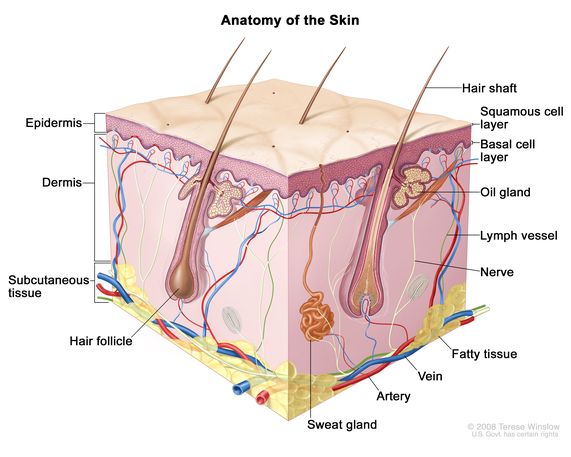cutaneous squamous cell carcinoma
(kyoo-TAY-nee-us SKWAY-mus sel KAR-sih-NOH-muh)
Cancer that begins in cells that form the epidermis (outer layer of the skin). It usually occurs on areas of the skin that have been exposed to natural sunlight or artificial sunlight (such as from tanning beds) over long periods of time. These areas include the face, ears, lower lip, neck, arms, or back of the hands. It may also occur on areas of the skin that have been burned or exposed to chemicals or radiation. Cutaneous squamous cell carcinoma may appear as a firm red bump, a scaly red patch, an open sore, or a wart that may crust or bleed easily. Cutaneous squamous cell carcinoma that has not spread can usually be cured. Also called squamous cell carcinoma of the skin and squamous cell skin cancer.
